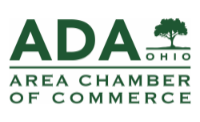By Megan Gushrowski, Pharmacist and Karen L. Kier, Pharmacist on behalf of the ONU Healthwise Team
Due to COVID-19, Elton John suspended his Farewell Yellow Brick Road tour in 2020. During the pandemic, he formed collaborations with other artists including Dua Lipa. They did an upbeat remix titled Cold Heart, which hit number 1 in 12 countries.
Do cold temperatures impact heart disease?
In the United States, cardiovascular or heart disease (CV) continues to be the leading cause of death. CV is the most expensive disease with costs of around $400 billion each year.
While multiple factors contribute to the development of CV, high blood pressure (hypertension) is the top modifiable risk factor. Nearly 50% of adults have high blood pressure (BP), but only 25% have their BP controlled.
A normal BP is a systolic (top number) of less than 120mmHg with a diastolic (bottom number) of less than 80mmHg. This is where you will hear healthcare professionals talk about the normal BP of 120/80.
Many people have heard that winter months can have a negative effect on a person’s mood; however, a recent study found winter weather may impact BP control in patients with high blood pressure. The study demonstrated patients with high BP had an increase of up to 1.7 mmHg in their systolic BP in winter months compared to summer months. The percentage who met their BP goal in the winter months decreased by 5%.
Studies evaluating the risk of a heart attack while shoveling snow found cold temperatures increased the risk beyond just the physical exertion. In a Canadian study, the researchers found those who used a snowblower rather than shoveling were at a high risk of a heart attack due to the cold weather.
If a person’s BP remains high for too long, there is an increased risk of developing other conditions, including kidney disease, vision loss, and stroke. It is important to keep a close eye on BP readings especially during the winter months. If you have been told you have high BP or hypertension, it is advised to measure your BP at home with an automated machine or go to your local pharmacy to have your BP checked.
An elevated BP is a systolic of between 120-129 with a diastolic less than 80. High BP (hypertension) is defined as a systolic greater than 129 and/or a diastolic greater than 89. Only one number has to be elevated to be called hypertension.
Studies including a recent one in the AHA journal Circulation have demonstrated at home blood pressure measurements are more effective in identifying high BP than in office or clinic settings.
Various factors can influence an accurate reading such as not having both feet on the ground, a full bladder, not resting for 5-10 minutes before taking, caffeine or tobacco use, and the wrong cuff size wrapped around the arm. Another factor is called white coat hypertension caused by our bodies increasing our BP in a healthcare setting (nerves, anxious, scared). Our BP even fluctuates depending on the time of day or if we are sleeping.
Home BP measures can give a better perspective!
It is important to sit in a comfortable chair with your back supported. Do not eat, drink, or use caffeine or tobacco products including vaping within 30 minutes of the measurement. Make sure to have both feet flat on the ground without crossing your legs. Do not talk while the machine is measuring and empty your bladder before taking a measurement.
Other critical elements are to make sure the cuff is on bare skin and not over clothing and your arm with the cuff is resting on a table at chest height. Think about the arm being at or slightly above your heart.
Finding the right machine is the key! Avoid BP machines that wrap around the wrist. They often give false readings. Omron devices are consistently rated at the top. Consumer Reports is a good source for reviews. Keeping a log book is a great way to record BP measurements. Take it to your appointments.
Besides providing your log to your healthcare provider, it is important to contact their office if you ever get a high BP reading. A good guide for when to call or visit an urgent care/ER is if your systolic is over 180mmHg and/or your diastolic is over 110mmHg.
Cuff size matters when measuring your BP. Make sure to get a reading with the right size cuff to go around your upper arm (ask a pharmacist for help). Some individuals may need an extra-large cuff or a child’s sized cuff. A June 2023 study from the American College of Cardiology showed the wrong cuff size can result in a 20mmHg difference in BP readings.
Talk to your pharmacist or healthcare provider about measuring BP in your house!
ONU Healthwise is offering flu and COVID-19 vaccines. Vaccine clinics are held Monday-Friday from 4:00-6:00 p.m.
ONU Healthwise Pharmacy
419-772-3784


